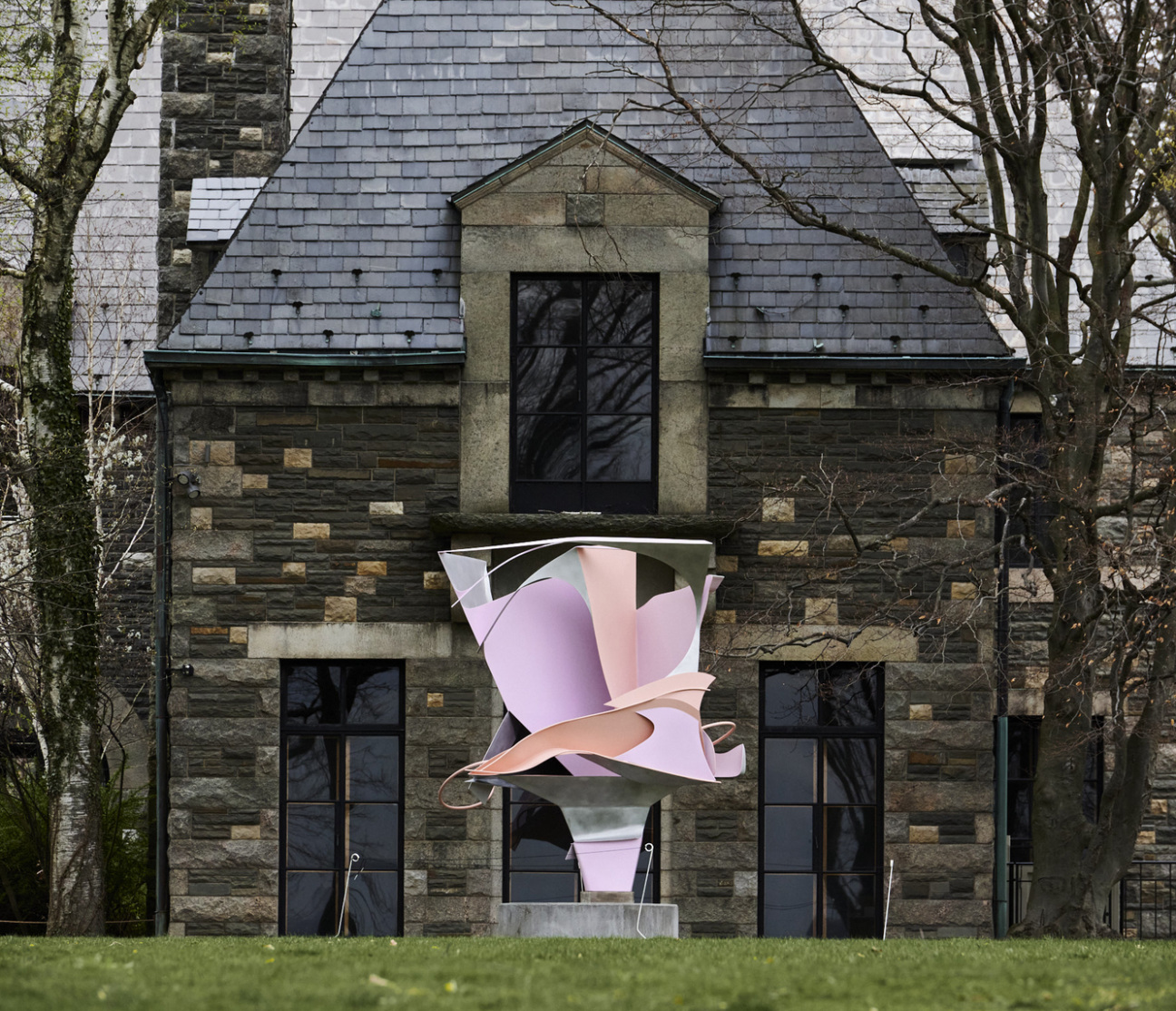
“There's a macho pretension to making 30-foot sculptures. I was trying to take that on with a bit of sass or hubris, while also undermining it with a kind of approachability,” says Arlene Shechet. She’s talking about the title of her latest show, “Girl Group,” which will punctuate Storm King Art Center’s rolling hills and constellation of permanent installations through the fall. “Like, ‘I'm not gonna just lure this over you. I'm talking to you. I'm with you. We're part of it. We are the group.’ I love to have that simple idea next to something that's bigger than life.”
Indeed, the 73-year-old sculptor’s ensemble of six towering metal sculptures—the biggest she’s ever made—seem to test the upper limits of possibility, precarious not just in their teetering breadth but in their clash of painted and unpainted surfaces, and their insistence on not just dotting their forested surroundings but addressing them. The new works reflect her status as one of the art world’s great inquisitors of form—and what it affords its beholder.
Over her four decade-long career, the native New Yorker’s penchant for spirited interrogation has landed on many a target—be it language, color palette, siting, or texture. A Shechet work is always a totem of the present but remains in dialogue with its antecedents and future interlocutors. “Girl Group” might be her greatest conversation starter yet.
To mark the show, Shechet gives CULTURED a look inside the journey, practice, and commitments behind the show.
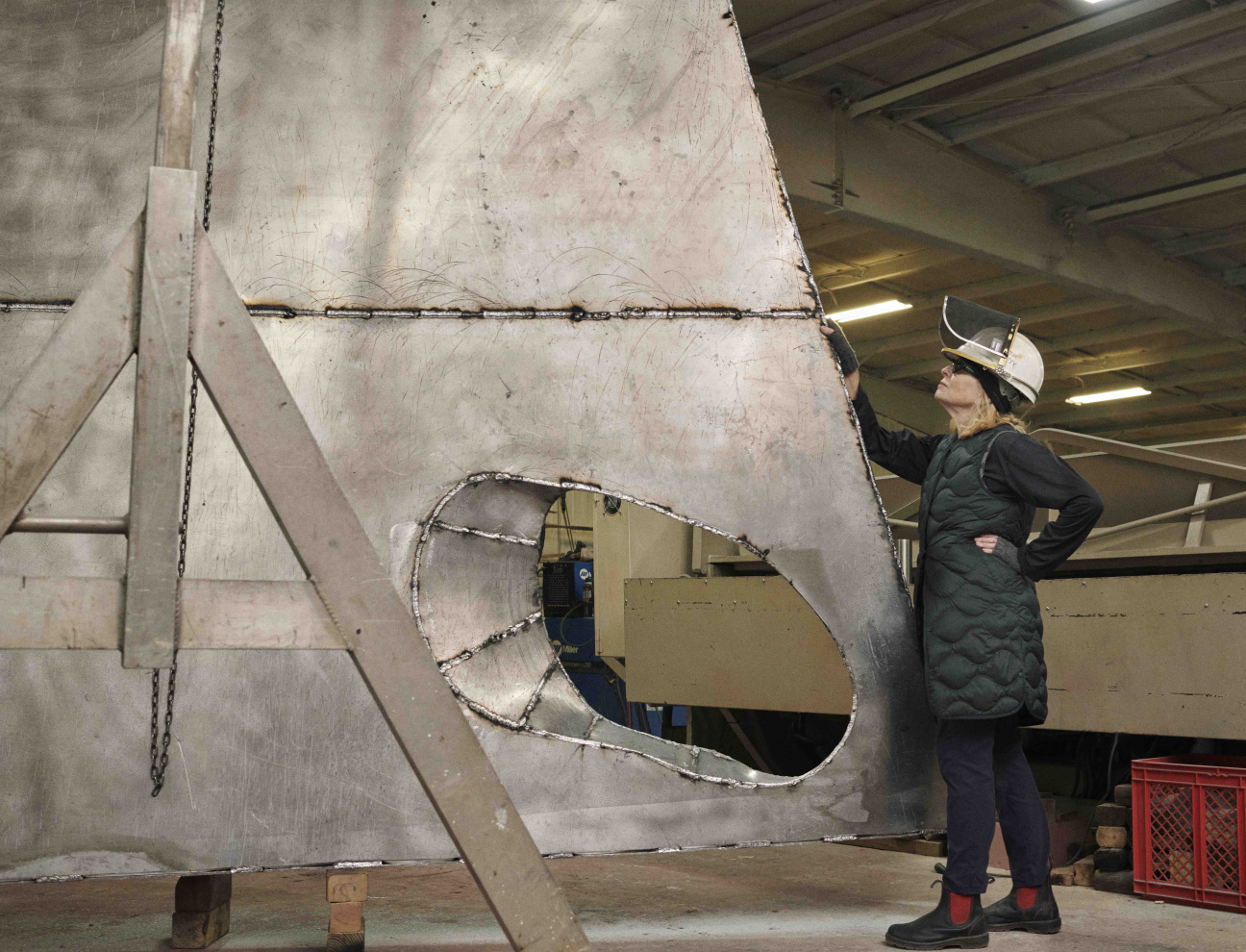
CULTURED: How does it feel for “Girl Group” to be out in the world?
Arlene Shechet: Given that the gestation of this has been almost four years, it feels like both a miracle and a huge relief to have this thing out of my head and hands and into the real world where it can live a much richer life … The works really need to be completed by having an audience. Sculpture is very much a thing that takes up space and time and is sort of an event in itself, in that it involves moving around it and revealing hidden parts. It does not communicate on the screen, and that's one of the things I love about it. It exists in real time. But at the same time it's frightening if people don't go to see it.
CULTURED: You've been working as an artist for over four decades. How do you feel working on “Girl Group” over the past four years has surprised or challenged how you experience your own practice?
Shechet: I've been engaged in challenging myself for my whole career. That’s ultimately what the work is about: working in the studio, being challenged, and having a very real, rich dialogue with the work on a daily basis, not from show to show. About 30 or 40 years ago, I made that commitment to myself: I insisted that everything be alive in the moment. I don't want to be a worker, I want my studio time to function as a discovery. There's no excuse for not having a question and a discovery and a problem every day.
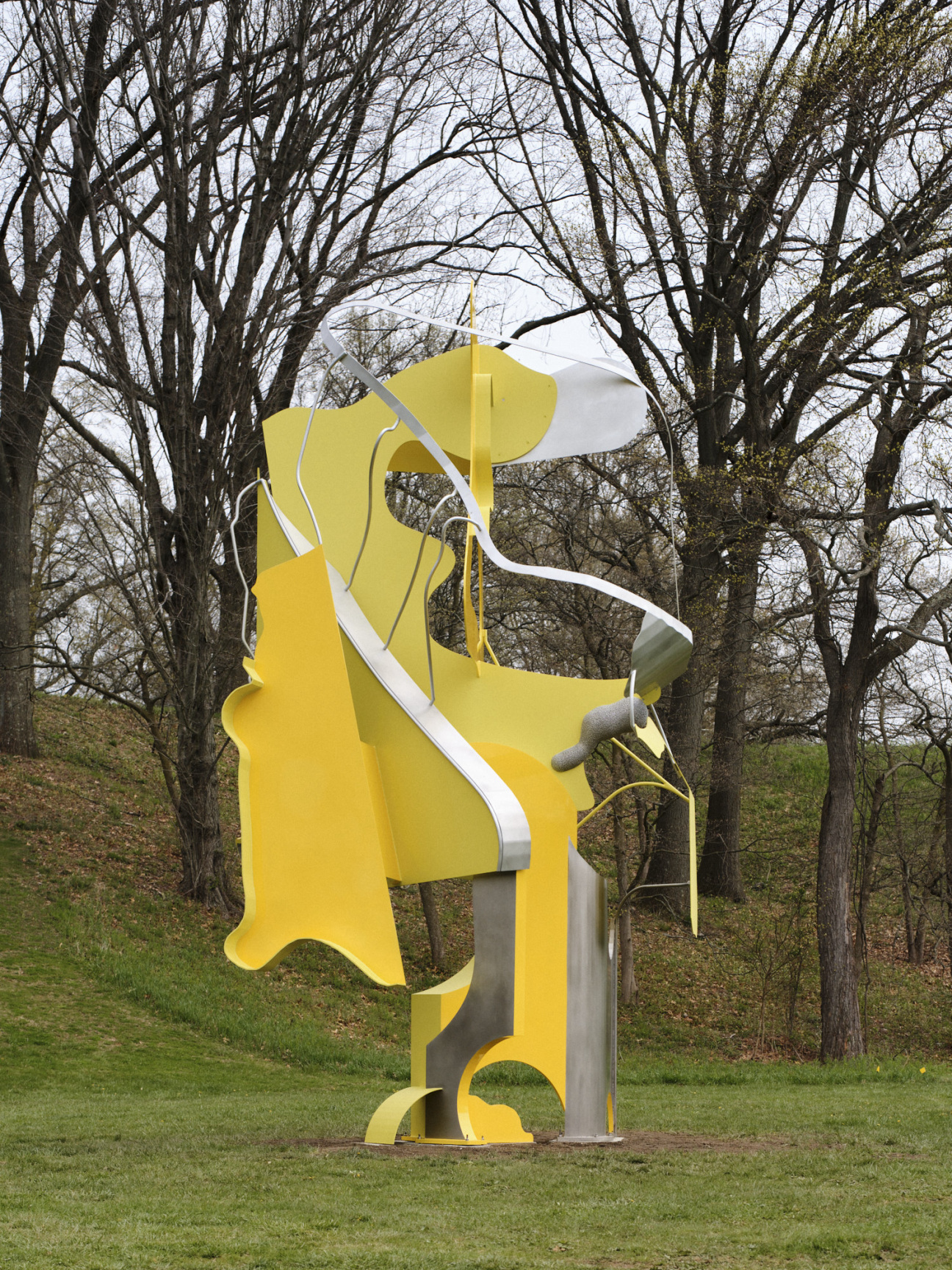
CULTURED: You have studios in Kingston and Woodstock. How have you engaged with the park in the past and what was your experience of it before being invited to put this exhibition together?
Shechet: Well it's a gorgeous landscape and it's a great place to visit. I engage with it like, “Here's the landscape that I would love to play in.” It makes me salivate to think about the rolling hills because siting things is really challenging and very fun. I needed to signal [that the sculptures are a] group because so many people think if you're gonna do something at Storm King you're making one monumental thing. I was making six. I wanted the sculptures each individually to feel very whole unto themselves and perfect in their siting. But I also required that from every single point of view, you can always see, if not all of the group, three or four works. They're beckoning to one another. I made some benches for people to sit on [too].
CULTURED: And it's not the first time that you installed benches in a show of yours. You're not only thinking about the sculpture, but also about the person who's seeing the sculpture and how they're going to see it.
Shechet: There's some element saying right away, “I'm thinking about you. This is an invitation.” If you’re inviting somebody, provide for them. Outdoor work has created that possibility more than doing a gallery show or a museum show. I feel like a lot of people will come not thinking that they're going to see these works and then be surprised by them and see them in a very immediate and raw way. I want to speak to the people who are just seeing these things out of the corner of their eye; maybe it impacts just a tiny bit on their sense of communication and empathy. The seats are just part of making it possible to pause. I'm trying to make work while I'm in an open state, and I want people to experience the work in that way.
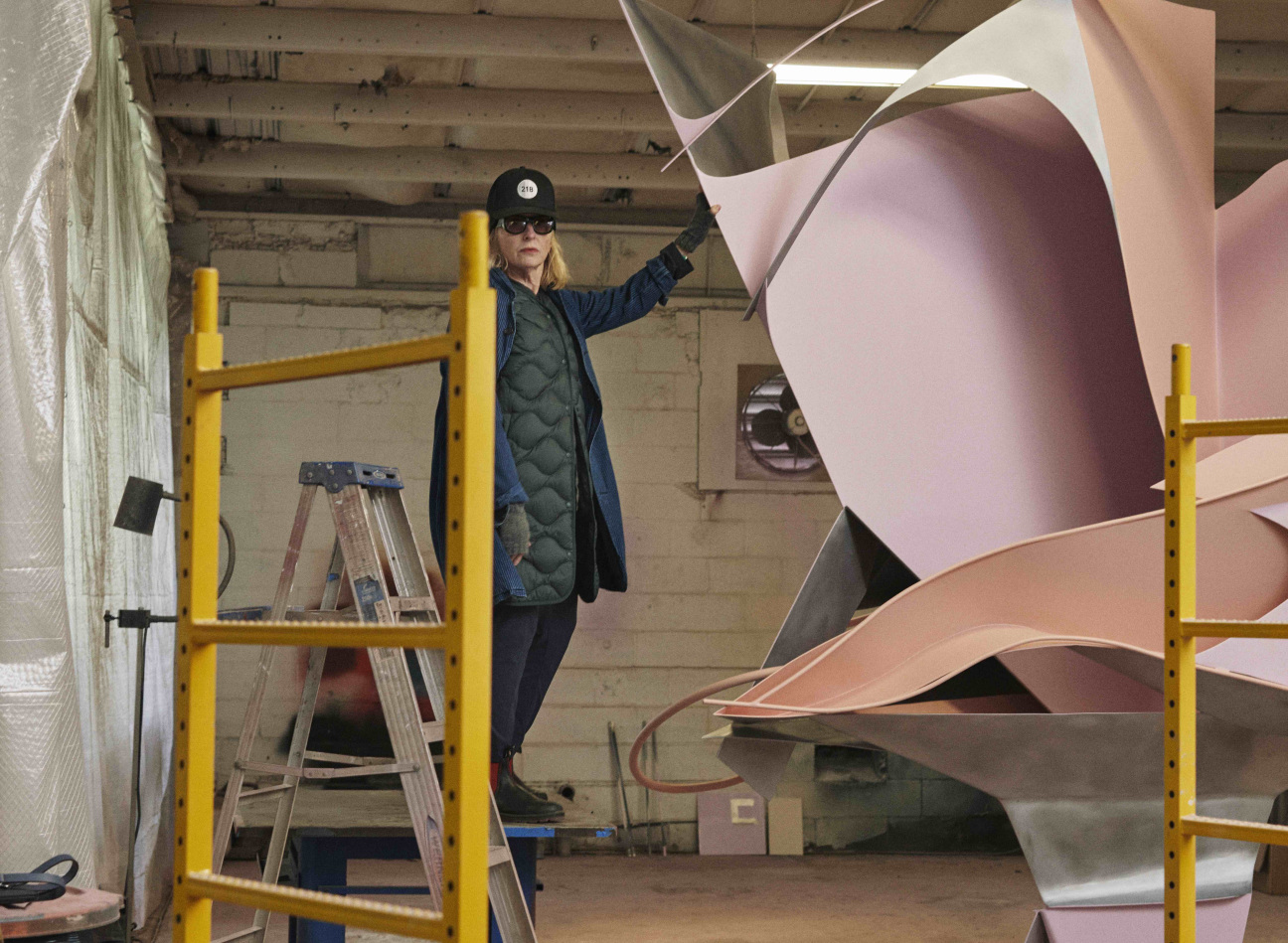
CULTURED: Weather doesn’t need an invitation. The sculptures themselves, you're exposing them to elements. How does it change the way that you think about them?
Shechet: That's one of the reasons it took so long to make these things. I worked with engineers and high tech paint people, and they are very much produced to be outside. They are made to accept and withstand all kinds of weather and forces of people. It didn't happen easily. It's expensive, and a lot of research went into that.
CULTURED: These are the most monumental works that you've made. I’m interested in them being these sturdy giantesses—stronger and bigger than ever—and the dialogue they have with the ceramic studies on view indoors at Storm King.
Shechet: The ceramics provided the germ, the seed from which the [outdoor sculptures] grew. But I had no interest in making super large-scale ceramics. I'm not interested in taking that medium and trying to stretch it into what it comfortably would like not to do. But I knew I was up for it [with metal]. I’ve been using steel and wood and ceramics together in works for a very long time, so metal is not a foreign substance for me. I find that I have a decent ability to work from one medium to the next, and I see how they're all very related.
There is a great tradition of welded metal sculptures at Storm King, and I wanted to address that because I thought it’d be interesting for me to really be part of that vocabulary and still very different, rather than just entirely different. I wanted to challenge myself to work the way those mid-century guys were working, and to take the very volumetric mushy material and force myself to understand material construction. So they're really new for me, and I think they're also new for Storm King.
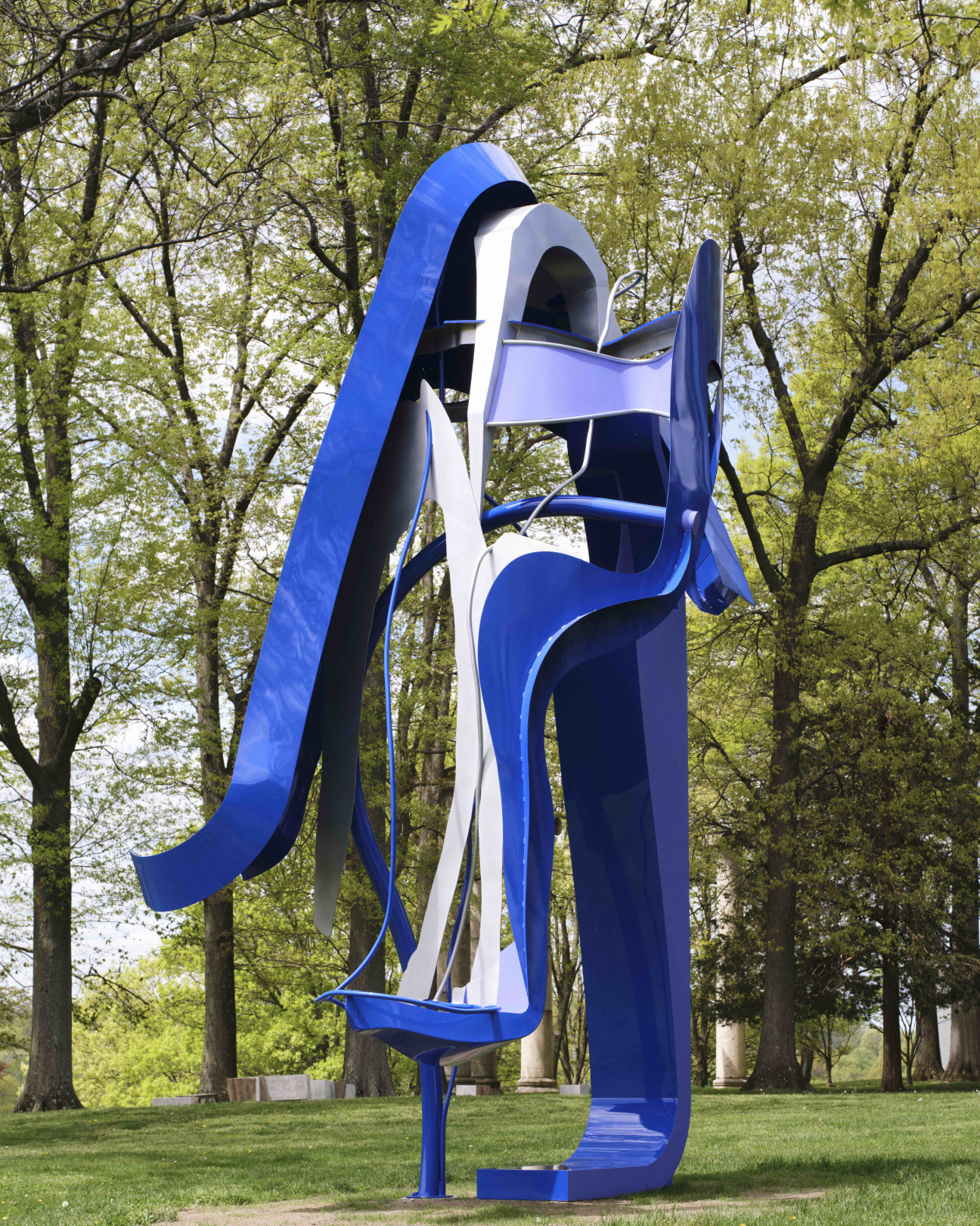
CULTURED: How do you want this show to be remembered in your career, and what do you want people to take away from it?
Shechet: I'm full throttle [right now]. That should be obvious. I feel like I always strive to make shows that are generous, meaning I'm not holding back. That's what I want people to feel: that this is an offering that's generous. I'm making these works both for people who know a lot about art, and the history of art, and for the general public who might be intrigued by how the shadows pass through the pieces or how the sun blasts off of some color and then changes the color from yellow to white. So many things happen outside.
"Girl Group" by Arlene Shechet, and curated by Nora Lawrence and Eric Booker, is on view through November 10, 2024 at Storm King Art Center in New Windsor, New York.










 in your life?
in your life?

